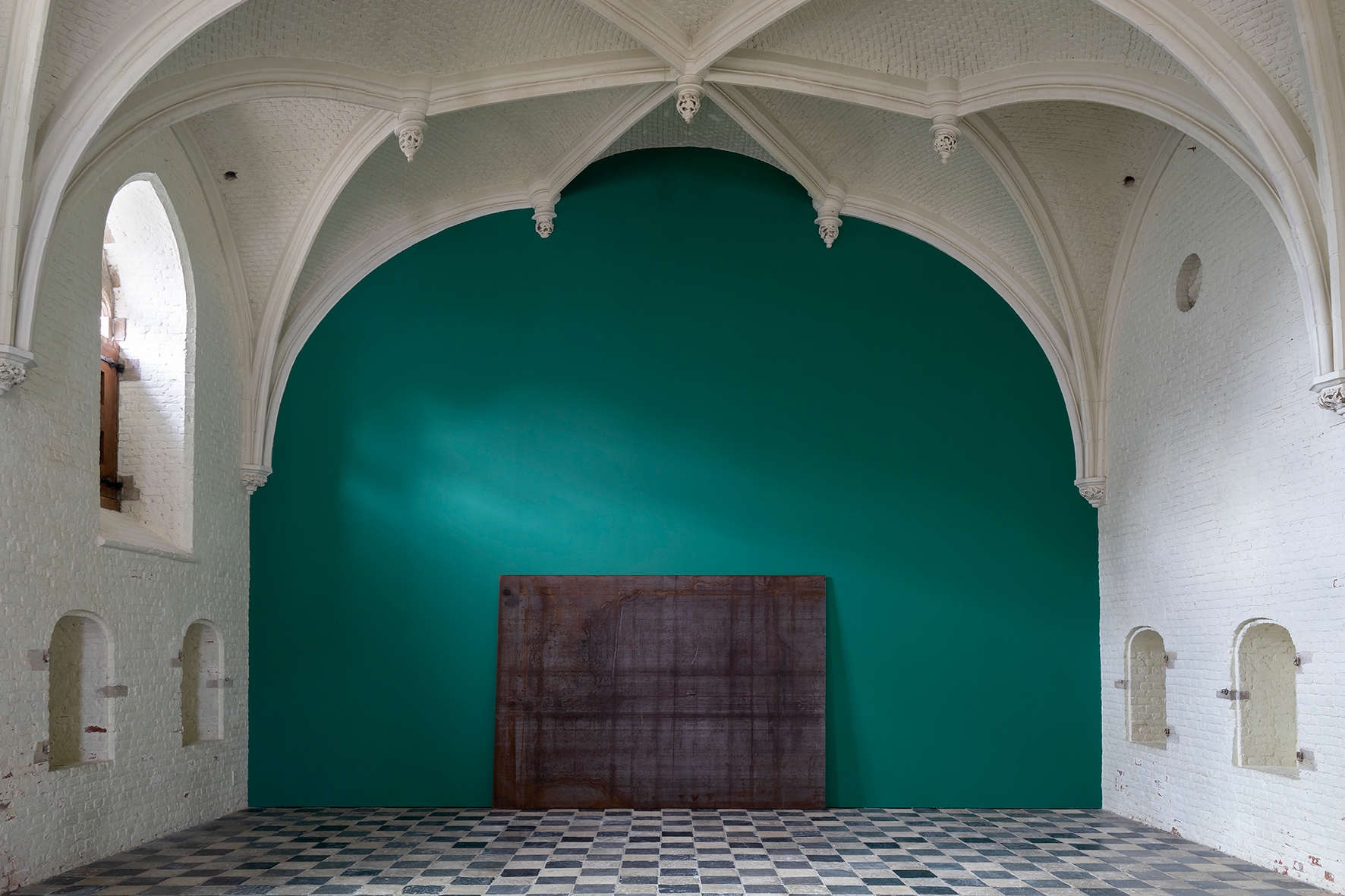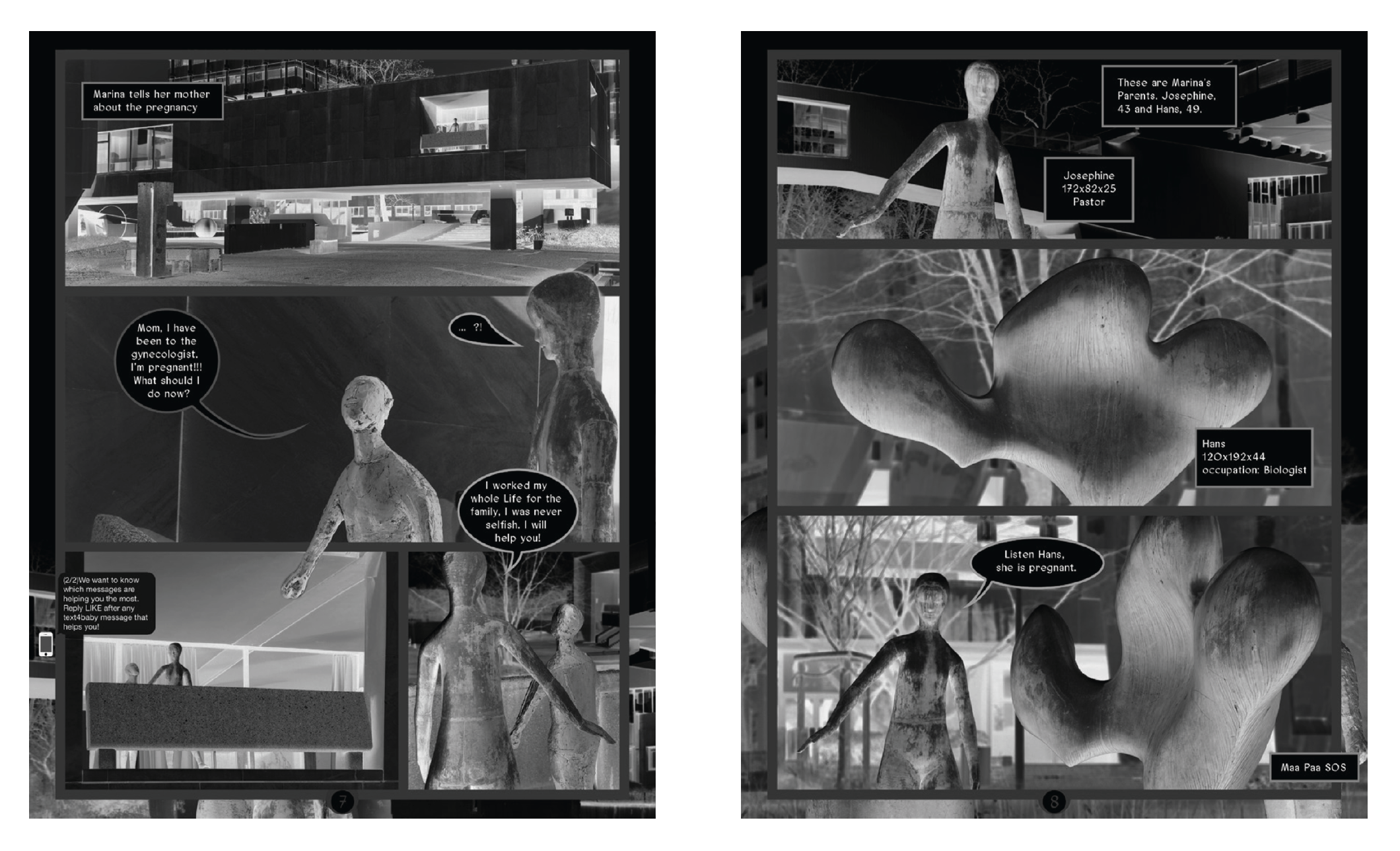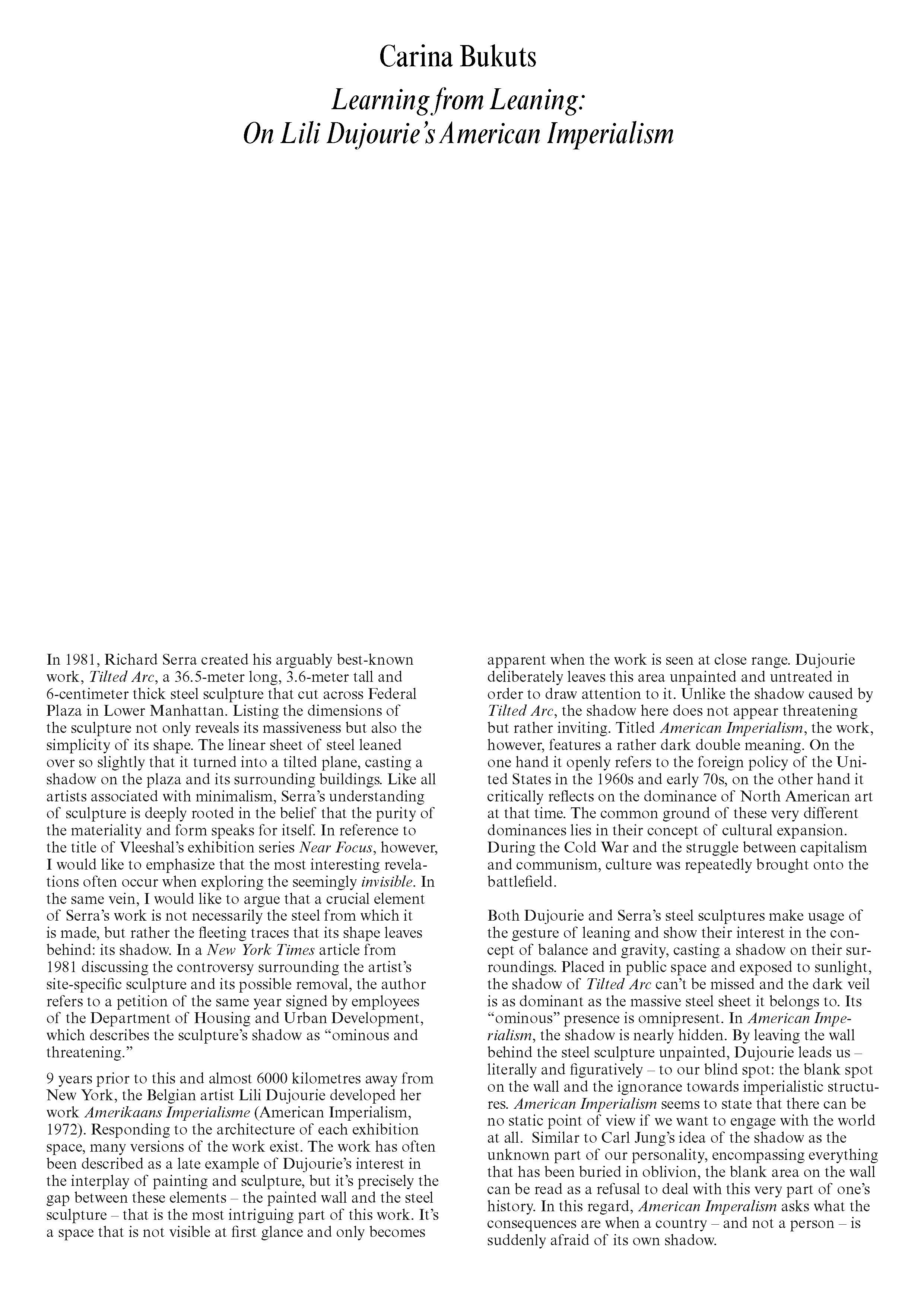Near Focus #2
Lili Dujourie
Solo exhibition
4 July – 2 August 2020
Vleeshal (Map)
Curator: Julia Mullié

Near Focus
Convinced that 'looking back' and 'seeing again' can help sharpen our vision of the future, Vleeshal showed works from its unique collection during the summer of 2020. Vleeshal has a long-standing partnership with the Antwerp museum M HKA, where Vleeshal’s collection is conserved and displayed. With Near Focus we reflected on this collaboration with exhibitions by Jimmie Durham, Lili Dujourie and Pipilotti Rist. The works came from both our own collection and that of M HKA, and the exhibitions each engaged with the history and current programme of Vleeshal in their own way.
Over time, the meaning of artworks constantly changes, partly because the context in which they find themselves varies as well. Works that you have already seen before can unfold new meanings and encourage personal reflection. The title of this exhibition series, Near Focus, refers to the discovery of the Galilean Telescope in 1608, the predecessor of the telescope and binoculars we know today. It was invented by Hans Lipperhey in Middelburg. The Galilean Telescope had a worldwide impact because it made it possible to study things in detail that were previously invisible.
The term ‘near focus’ indicates the minimum distance at which an optical aid (such as binoculars) can be in focus. This is an especially important quality for nature enthusiasts who want to get as close to their object of study as possible. In order to reduce the distance to the works of art and stimulate reflection, Vleeshal invited different people to reflect on the works in Near Focus from various perspectives.
Lili Dujourie
Since the late 1960s, Lili Dujourie has been building up an oeuvre that consists of apparent contradictions, in terms of material and concept. It started with a series of steel works in the 1960s. In the two decades that followed, Dujourie explored the new medium of video, and from the 1980s onwards she mainly made sculptures.
All these works are laced with (art) historical references as well as poetic visions for the present. Take, for example, the series of videos Hommage à ... I-V (1972) that she made around the time that she also created the important sculpture Amerikaans Imperialisme (American Imperialism, 1972), the work that was shown at Vleeshal in Near Focus. In the videos, Dujourie appears naked on a bed. She adopts a number of different poses, ones you see in classic paintings of female nudes. Dujourie questions the classical idea of the painter and his muse by being both the artist and the portrayed at the same time. In the title, Dujourie plays with the question to whom the homage is addressed: to the artist, the art of painting or perhaps to herself?
The use of language as sculptural matter is a recurring element in Dujourie’s oeuvre. The often poetic and clever titles add an extra layer of interpretation to the works.
For Near Focus, the artist proposed to show the variant of Amerikaans Imperialisme with a green wall and untreated steel, the first execution of the work as it was exhibited at the museum of contemporary art in Ghent in 1979.
Work from the Vleeshal collection
For several years, Vleeshal has been exploring parallels between developments in contemporary which are being shown in the present, and the early years of Vleeshal’s exhibition program in the 1970s, when new music, dance, visual art and performance were all innovatively brought together. The themes of performance and performativity in contemporary art, ascribing a central and active role to the beholder, are important in Vleeshal’s current programming. Lili Dujourie’s work discloses these parallels. In addition, Amerikaans Imperialisme responds to Vleeshal’s effort to relinquish the certainty of one history, and to provide a platform for a multitude of (sometimes consciously) hidden voices.
Perspectives
In the context of the collection exhibitions Near Focus Vleeshal offered different perspectives through which the artworks can be viewed. All perspectives were commissioned and printed in the exhibition booklet.
Learning from Leaning: On Lili Dujourie’s American Imperialism
Carina Bukuts
Text
2020
Writer, curator and editor Carina Bukuts wrote an essay on Dujourie's work.
PDF
Yes I'm Pregnant
Lena Henke
Comic strip
2020

Yes I'm Pregnant is a new, inverted version of a comic strip by Lena Henke. The initial version was made for the eponymous exhibition at Skulpturenmuseum Glaskasten Marl in 2014. Modernist sculptures from this museum‘s collection come together in this 'photo love story', a format mainly used in teen magazines.
The work was shown at Vleeshal in the 2021 group exhibition I Think I Look More Like The Chrysler Building.
Series
From time to time Vleeshal invites guest curators to organize exhibitions in the Vleeshal or to develop other projects. By doing so, we aim to welcome new perspectives and contribute to talent development.
Vleeshal is a unique center for contemporary art, not only because of its atypical exhibition space and exciting programming, but also because it has a collection. In the 1990s, under the impetus of then director Lex ter Braak, an ambitious collection of contemporary visual art was begun. This collection was intended for a newly envisioned museum in Middelburg, designed by Aldo and Hannie van Eyck. In 1995 it became clear that, unfortunately, there was insufficient political support for this museum. The impetus of collection building had therefore lost its possible context and visibility and encumbered Vleeshal. The collection had become a storage cost and management issue.
In 2005, the collection was given on a long-term loan to M HKA in Antwerp. M HKA was chosen because of the close historical ties between Middelburg and Antwerp, the museum's collection profile, and the fact that M HKA's director, Bart De Baere, was a member of the committee that purchased artworks for the yet-to-be-built museum in Middelburg in the 1990s.
The collection consists of two parts. One part includes national and local art from the BKR arrangement (the Dutch abbreviation BKR stands for Beeldende Kunstenaars Regeling, an arrangement, which from 1949 to 1987 provided artists with a temporary income in exchange for works of art or other artistic quid pro quo). The other part consists of artworks by international contemporary artists (including Jimmie Durham, Nedko Solakov, Suchan Kinoshita, Cameron Jamie, Pipilotti Rist, and Job Koelewijn).
There has been no active acquisition policy for years. The collection is expanded here and there with sporadic purchases and donations from artists who are part of the Vleeshal program.
